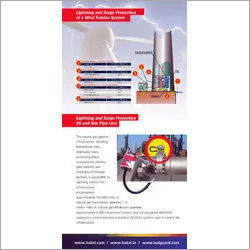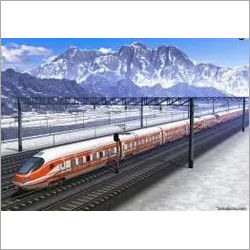- Home Page
- Company Profile
-
Our Products
- Signal System Protection Arresters
- Printed Circuit Board
- Stainless Steel Arrestors
- MS Protector Full SCH
- Master Slave Control Circuit Board
- Electric Surge Protection Equipment
- Spark Gap Switch
- Surge Protector
- Linksys Router
- Surge Protection Control
- Surge Protection Circuit Boards
- Data Protector Switch
- Data Protector Switch Board
- Surge Protector Circuit
- Data Line Transient Protector
- Data Protector Arresters
- Data Protector
- Telecom Co-axial SPD
- Telecom Surge Protection Device
- Surge Protection Devices
- Surge Protection SPD
- Solar Photovoltaic SPD
- Electric Coaxial Surge Protector
- Electrical Surge Protection Device
- Industrial Surge Protection Devices
- High Voltage Surge Protection Arrester
- Electric Circuit Boards
- Power Surge Arrester
- Power Arrestors
- Surge Arrester
- Lightening Arrestors Spark GAP
- Arrestors Plug
- Arrestors Power
- Lightning Arrester
- Protection Arrestors
- Arrester -
- Arrestors -
- Lightning Arresters Upto 1000 V
- Surge Protection Unit
- Lightning Arrester Unit
- Lightning Surge Protector
- Surge Switch
- B100 Lightning Arresters
- PIV12,5-275 Lightning Arresters
- PIV12,5-440 Lightning Arresters
- PIV-850 Lightning Arresters
- PIV12,5-275 DS Lightning Arresters
- PIV12,5-440 DS Lightning Arresters
- PIV12,5-150 Lightning Arresters
- PIV12,5-150 DS Lightning Arresters
- PIV12,5-75 Lightning Arresters
- PIV12,5-75 DS Lightning Arresters
- HS50-50 Lightning Arresters
- HS100 Arresters
- B50 Arresters
- HS55 Lightning Arresters
- Lightning Arrester Surge Protector
- HCS/3 0 Lightning Arresters
- HCS/3 0 DS Lightning Arresters
- HCS/3 1 Surge Arresters
- HCS/3 1 DS Lightning Arresters
- JK110 Lightning Arresters
- HG150 Lightning Arresters
- HZ110/3 0 Arresters
- PIV12,5-275/1 1 Lightning Arresters
- PIV12,5-275 DS/1 1 Lightning Arresters
- HS50-50/3 0 Lightning Arresters
- Arresters For Protection Of Signal Systems
- Surge Protection Devices DTB
- Surge Protection Devices DTB 1/12 /L
- DTB 1/48 /L Surge Protection Devices
- DTB 1/T /L Surge Protection Devices
- DTB 1/6 Surge Protection Devices
- DTB 1/24 Surge Protection Devices
- DTB 1/T Surge Protection Devices
- DTB 1/24 /R Surge Protection Devices
- DTB1/AR Surge Protection Devices
- DTB1/ART Surge Protection Devices
- DTE 1/6 Surge Protection Devices
- DTE 1/12 Surge Protection Devices
- DTE 1/24 Surge Protection Devices
- DTE 1/48 Surge Protection Devices
- DTE 1/T Surge Protection Devices
- DTNVE 1/24/0,5 Surge Protection Devices
- DTNVE 1/24/5 Surge Protection Devices
- Arresters DTB 485
- DTB 2/485 /L Arresters
- DTNVE 1/30/0,5 /L Surge Protection Devices
- Surge Arresters
- Outdoor DC Systems
- Outdoor AC Systems Surge arresters
- Arresters for Indoor AC System
- Indoor DC Systems
- Cathodic Protection Surge Arrester
- Surge Protection for Telephone
- ADSL Telecommunication Lines Surge Protection
- Type 2 / Class II / Class C Surge Arrester
- Type 1 2 / Class I II / Class B C Surge Arresters
- Spark Gap Lightning Arrester
- Lightning Current and Surge Arrester
- Surge Protection
- Surge Protection for Offices And Family Houses
- Surge Protection Devices for Industrial Applicatio
- Surge Protection Devices for Industrial Application
- Insulation Monitoring Devices
- Protection Of Photovoltaic Systems
- Pipeline System Protection
- Offshore Oil Applications
- Low Voltage Limiter
- Grade Crossing
- Lightning And Surge Protection Of A Wind Turbine S
- Surge Protection for VFD
- Lightning and Surge Arresters
- PV Surge Arresters
- Surge Filters
- Power Supply Protection Arresters
- Equipotential Bonding SPD
- Surge Arrester for Communication Lines
- Surge Protection Device
- Powerline SPD
- Insulation Monitoring Device
- Voltage Guard
- Circuit Boards
- Equipotential Decoupling Gas Discharge Tubes
- Ground Fault Equipment
- Lightning Conductors Equipment
- Metal Lugs
- Solar PV DC Surge Protection Device
- Spark Gap Lightning Arresters
- Isolation Spark Gap for pipelines
- Ethernet Surge Arrester
- Surge Protection for Signal Lines
- Solar PV Surge Arrester
- Combined Surge Arrester
- Surge Arrester for Data Lines
- Cable Gland
- Battery Terminal
- Bimetallic Connector
- Fasteners
- Signal System Protection Arresters
- Certification & Factory Tour
- Contact Us

Surge Protection for VFD
2000.00 - 3000.00 INR/Piece
Product Details:
X
Surge Protection for VFD Price And Quantity
- 100 Piece
- 2000.00 - 3000.00 INR/Piece
Surge Protection for VFD Trade Information
- Cash in Advance (CID) Cheque Cash Advance (CA)
- 1000 Piece Per Day
- 20 Days
- Yes
- Sample costs shipping and taxes has to be paid by the buyer
- Box
- Western Europe Australia South America Eastern Europe Middle East Central America Asia North America Africa
- All India
Product Description
Due to the action of the drive, the power quality of the electrical environment can be compromised. That is, the drives can create voltage surges and harmonics on the system.
There are various technologies available that aid in correcting these issues. This application note focuses on applying surge protective devices (SPDs) to a drive system to mitigate the damage that can occur due to voltage surges while considering the effects of the harmonics on the surge protective device.
Often the incoming voltage is 480 V, but other voltages may be used. The incoming power is usually stepped down to a lower voltage (typically 120 Vac) that provides power to the control circuit. The control circuit contains sensitive electronics.
Drive InputProtecting the drive input is an essential step in protecting the drive system. Providing protection at this location prevents surge damage due to events propagated on the electrical system from upstream sources, external events such as lightning and switching surges created by the utility, and the interaction of multiple drives on the same system.
At this location, a parallel connected, voltage responsive circuitry device is appropriate (one without frequency responsive circuitry). Frequency responsive circuitry is not recommended for this location due to the fact that this location is typically more susceptible to impulse transients as opposed to ring wave transients.
Inverter InputThe inverter input is one of the most sensitive and critical areas of the drive itself. It is at this location that care must be taken and the proper survey conducted. You may install a parallel connected, frequency responsive circuitry device provided you have confirmation that within this drive that no additional capacitors have been installed to mitigate harmonic currents.
Control Circuit
The control circuit contains sensitive electronics that can be damaged by the environment created by the drive or by surges from external sources. Protection at this location is essential. Since this circuit is isolated by a step down transformer and it feeds sensitive electronics, a series connected SPD with frequency responsive circuitry is recommended for this location.
Drive OutputProtecting the immediate drive output is recommended when the length of the connection between the drive and the motor is longer than 50 ft (15 m) or if the connection is routed along an external wall or outdoors.
One reason for protecting at the immediate output when the length of the connection to the motor is long is due to reflected waves that can occur as the signal (often higher frequency) from the output of the drive reaches the motor and is then reflect back and forth between the drive and the motor. This action can create "voltage piling" the reflected voltage adds to the nominal voltage and other reflected waves. The SPD will aid in reducing the voltage peaks of the reflected waves.
More importantly, if the connection between the drive and the motor extends outdoors, along a path that is exposed to the environment or close to the buildings steel structure, protection at this location is important to diminish the effects of direct lightning or induced voltage surges due to nearby lightning. These surges can cause damage to the drive, even if protection is provided at the motor input.
At this location, a parallel connected, voltage responsive circuitry device is appropriate (one without frequency responsive circuitry). Frequency responsive circuitry is not recommended for this location due to the high harmonic content of the signal due to the normal operation of the drive. Installation of frequency responsive circuitry devices at this location will lead to failure of the SPD. Utilizing a voltage responsive circuitry device at this location will eliminate this possibility.
Enter Buying Requirement Details

 English
English Spanish
Spanish French
French German
German Italian
Italian Chinese (Simplified)
Chinese (Simplified) Japanese
Japanese Korean
Korean Arabic
Arabic Portuguese
Portuguese



